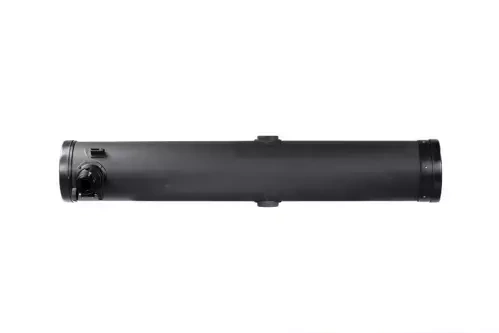Reflector telescopes
Reflecting telescopes are one of the two main types of optical telescopes. It enables us to make observations of the sky and the objects in it. The observational capabilities of a mirror depend mainly on the optical elements used in it. What celestial bodies you will be able to watch with the use of this type of telescope is also influenced by its construction. Before you choose the right model of reflecting telescope for you, you should familiarize yourself with the construction and parameters of its various parts.
What is a reflector telescope?
To begin with, let's explain where the name of the Newtonian telescope came from. As you may have guessed, the creator of the first reflector telescope was actually Isaac Newton, who constructed it around 1670. The scope was created first, but it had flaws. Newton's reflecting telescope was an attempt to improve on lenticular telescopes. It partially succeeded, but it was not without flaws either, so it underwent many modifications and improvements over time, as did the scope.
Mirrors differ from lenticular telescopes in that they use a mirror instead of a lens. It is responsible for reflecting the light rays, which are then concentrated in one point - the focal point. The reflecting telescope gives a real and magnified image, but it is also inverted, which is why this type of telescope works mainly for observing the sky and stars.
Construction of the reflecting telescope
Simply put, reflecting telescopes are made up of an eyepiece and a main mirror, located at the two ends of the tube. They also contain an additional, smaller second mirror, which is responsible for bringing the beam of light outside the tube. We can view the image of the sky and stars with the help of eyepieces, which are another very important part of the mirror. The construction of a reflecting telescope depends on its type and can differ in the secondary mirror used or even the number of mirrors.
Reflecting telescope - types
A reflecting telescope enables you to make observations of the cosmos that are not affected by the errors that occur in a telescope using lenses. The reflecting telescope was created just to eliminate spherical and chromatic aberration. However, it is usually the case that making changes to the construction carries the risk of other flaws appearing. Reflecting telescopes have been modified many times over the centuries, and that's how their different types were created. Their names come from the names of their constructors, and we will now introduce you to the most important types of reflecting telescopes for the world of astronomy.
Newtonian reflector telescope
It is most commonly used by astronomy enthusiasts because of its simple construction. It consists of a concave and paraboloidal main mirror and a flat second mirror. Its disadvantage is the length of the tube, which is due to the focal length.
The Newtonian reflecting telescope is a very good option for beginners. It will let you observe all the most interesting elements of the solar system, but you must pay attention to the parameters and quality of the optical system. The most important is its diameter, focal length, image magnification and field of view.
Cassegrain telescope
It has a concave parabolic primary mirror and a convex secondary mirror with a hyperboloid shape. The use of such a set allowed to shorten the length of the tube, so this solution is mainly used for medium and large reflector telescopes.Telescopes with concave and paraboloidal mirrors have one disadvantage and that is coma, that is, distortion of objects lying outside the optical axis of the telescope.
Further solutions were created, such as the Richey-Chretien reflector telescope, but they are much more complicated and are not used for amateur space observations. For such purposes, a Newtonian telescope is still usually used.
Optical system parameters
To fully enjoy space observation you need a high-quality optical system. How much you will be able to see depends mainly on the diameter of the lens or just the mirror. The larger the diameter, the more rays can enter the telescope, and we get a clearer image. The diameter of the mirror should be at least 80-114 mm.
For obtaining a magnified image of a mirror telescope, a high-quality eyepiece with a wide field of view is responsible. The magnifying characteristics of the mirror are affected by its focal length and the focal length in the eyepiece. However, this is not at all the most important parameter. More relevant is the wider field of view and it depends on the type of eyepiece. It is interchangeable, so it is best to use a set of eyepieces with different capabilities. In this way you can adjust the magnification and field of view of the eyepiece to your current needs.
What kind of observations can we make with a reflecting telescope?
Observations carried out with a reflector telescope will not be the same as space exploration with refractors. The operating principles of these devices are different. The electromagnetic waves emitted by the various cosmic bodies are also different. They differ in length, for example, and this affects the way they are refracted. So there is no one universal device that will allow you to observe both planets, the Moon and nebulae.
The optical capabilities of a lens composed of lenses are greater, so we can use it to make observations of the brighter elements of the cosmos, namely the planets and the Moon. A reflecting telescope gives slightly lower contrast, so it will be better suited for observing darker nebulae, clusters and galaxies.
What else is important in a reflecting telescope?
The set of eyepieces should also include a Barlow lens, which is responsible for compensating for defects such as coma. Also pay attention to the type of the mount, as it also determines how the optical equipment works. The offer of our store includes all these elements. You can choose a device in a set with the most important accessories or compose it yourself, also taking advantage of the opinions of other users. You will be able to enjoy the mirror telescope for 5-10 years, and maybe even more. As long as you choose a mirror with an optimal diameter, good reputation and great quality.

- Brand: OPT
- eyeglass: 1,25"
- focal: 1000
- magnification: 200 x
Telescope OPTICON Universe 114F1000EQ
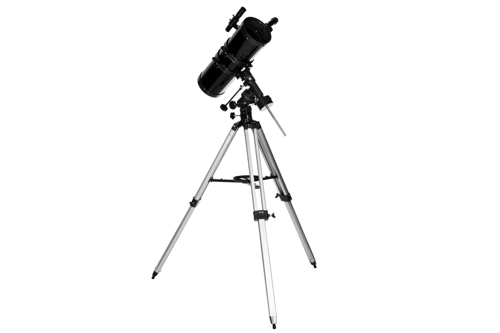
- Optical system: Reflector (mirror telescope) Magnification: 430 x Diameter [mm]: 150 mm Focal length [mm]: 1400 mm Focal ration: f/9,33 Resolving power: 0,92" Limiting magnitude: 13,2 mag Focuser: 1,25" Mount: Parallactic
Telescope OPTICON Galaxy 150F1400EQ
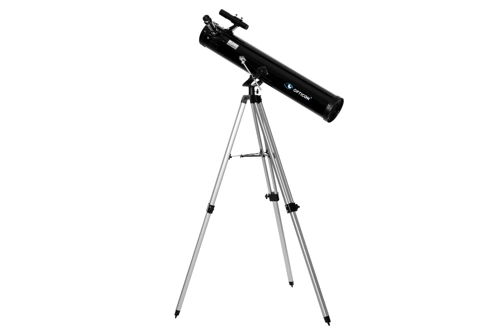
- Brand: OPT
- eyeglass: 1,25"
- focal: 900
- lens diameter [mm]: 114
- magnification: 450 x
Telescope OPTICON Discovery 114F900AZ
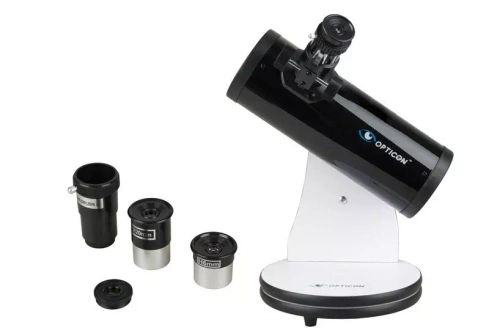
- Brand: OPT
- eyeglass: 1,25"
- focal: 300
- lens diameter [mm]: 76
- magnification: 150 x
Telescope OPTICON StarQuest 76F300DOB

- Brand: OPT
- eyeglass: 1,25"
- focal: 700
- lens diameter [mm]: 76
- magnification: 525 x
OPTICON Pulsar 76F700 Telescope

- Brand: OPT
- eyeglass: 1,25"
- focal: 1300
- lens diameter [mm]: 160
- magnification: 390 x
OPTICON Orbiter Telescope
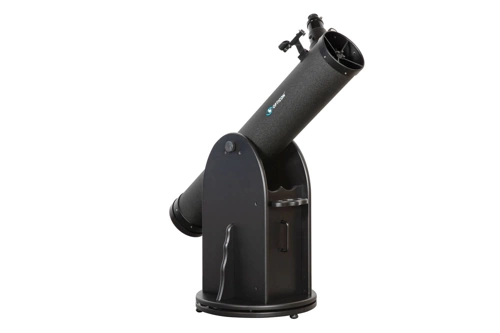
- Brand: OPT
- eyeglass: 1,25"
- focal: 1100
- magnification: 330 x
OPTICON Stargaze Telescope

- Type: Reflector (mirror telescope)
- Zoom: 110 x
- Diameter [mm]: 135 mm
- Focal length [mm]: 1100 mm
- Light Output: f / 8.1
- Resolving power: 0.86"
- Stellar range (magnitude): 12,8 mag
- Focuser: 2"/1.25"
- Assembly: Dobson
- Image: Inverted
- Brand: Opticon
OPTICON Stargaze Telescope (OUTLET)

- Brand: OUTLET
- eyeglass: 1,25"
- focal: 800
- lens diameter [mm]: 203
- magnification: 246 x
Opticon SkyChart 203F800EQ-4 telescope (OUTLET)

- Brand: OUTLET
- eyeglass: 1,25"
- focal: 1300
- lens diameter [mm]: 160
- magnification: 390 x
OPTICON Orbiter telescope (OUTLET)

- Brand: OUTLET
- eyeglass: 1,25"
- focal: 800
- lens diameter [mm]: 203
- magnification: 246 x
Opticon SkyChart 203F800EQ-4 telescope (OUTLET)
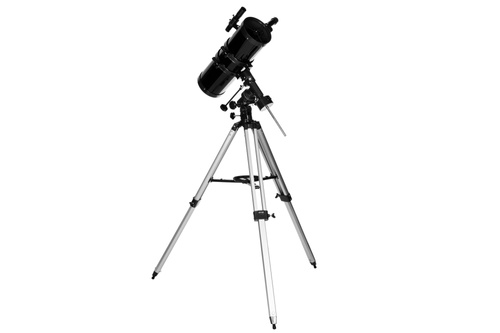
- Brand: OUTLET
- eyeglass: 1,25"
- focal: 1400
- magnification: 430 x
OPTICON Galaxy 150F1400EQ telescope (OUTLET)
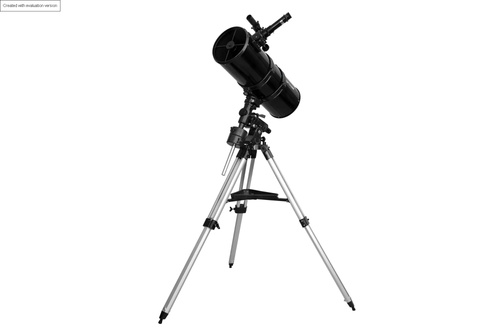
- Brand: OUTLET
- eyeglass: 1,25"
- focal: 800
- lens diameter [mm]: 203
- magnification: 246 x



